Grasserie - a disease of silkworms
This is kinda gross. It's interesting if you raise silkworms, but if you're easily grossed out, you might want to use your browser's BACK button, or click here to go back to the home page.
If you want to read more about it, scroll down. I'm not kidding, it's gross.
OK, you've been warned enough! Read on....
I've been dealing with a silkworm disease called Grasserie. According to my sericulture texts, Grasserie is caused by a virus called Borrelina. It is infectious through contact with the effluent from the sick worms, and it can be spread through the skin of the silkworms and through ingestion of contaminated food. I don't know where it came from. The disease is also called nuclear polyhedrosis virus, and is listed as a disease that attacks several species of wild North American insects.
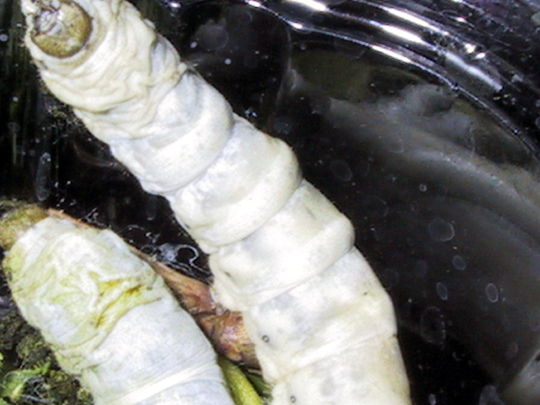
The first sign is that the worm looks a lot more plump than it should. When it's stretched out, it's kind of hard to tell - but the segments don't look right. One of my resources refers to it as looking like bamboo.

When the worm contracts, the over-fullness of the segments is distinct. They look like little sickly Michelin Men. They also become very fragile - the skin breaks easily, and oozes infectious milky liquid. It reminds me a lot of proofing yeast in water.
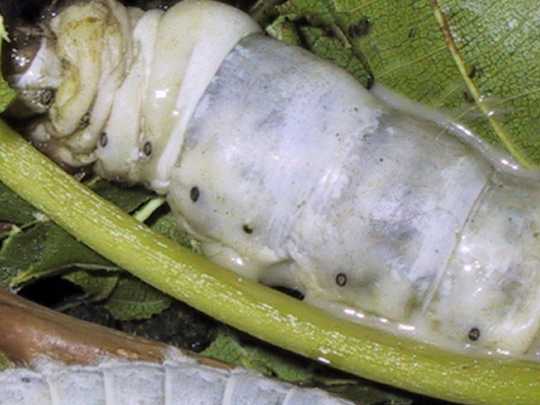
The worms start to get dark. Some of them will get what look like hernias, where the green mulberry inside pushes out toward one side. They get listless, and stop eating.
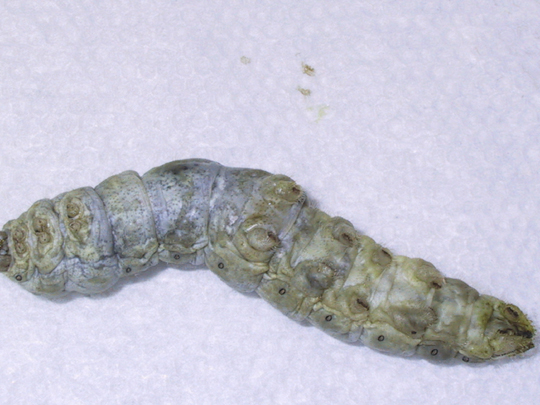
They eventually stop moving, although it takes them a while to die.
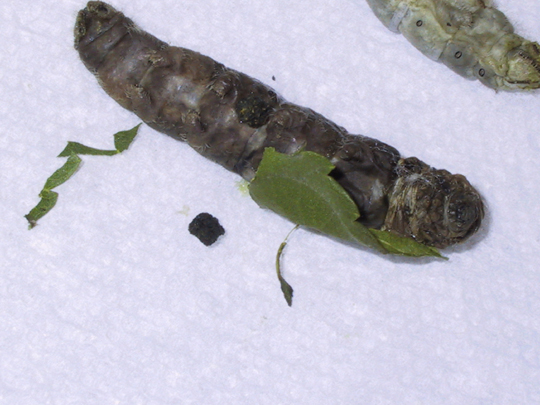
Once dead, within just a few hours they are black and putrefying. You have to be very careful picking them up, or they bust open and ooze guts. It's really gross.
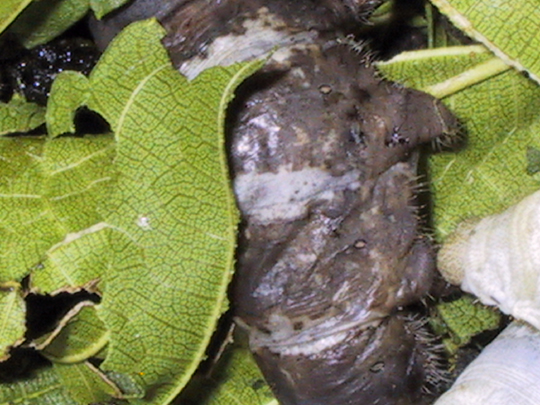
This is about a day later. I had to pick this one up with a spoon.
Hygeine is critical in dealing with disease in
silkworms. I've been managing the disease with several methods:
It seems like the management techniques have been relatively effective, as I'm
having fewer new infections, and there are some healthy looking worms despite
the widespread disease. I ended up getting only about 250 cocoons from a batch
of well over a thousand, but it's better than a total loss.